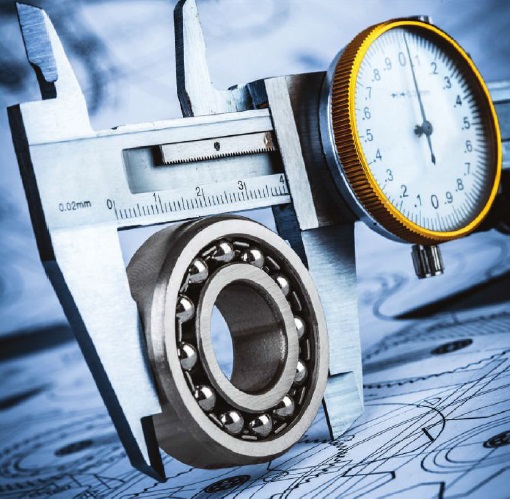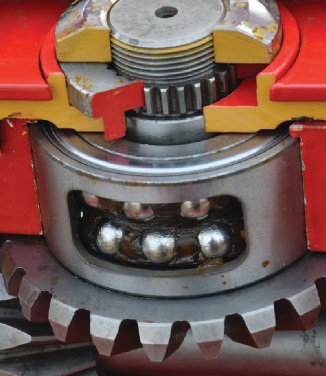Describe the most challenging bearing testing problem your company faced and your solution.
TLT Sounding Board April 2014
 www.canstockphoto.com
www.canstockphoto.com
Bearings are virtually everywhere, as are the problems and challenges incurred during their application and use. TLT readers have certainly seen their share of problems, based on their answers to this month’s survey questions. In some cases where problems occurred, an improper grease was specified. In others, it was poor lubrication practices such as over lubricating the bearing. One reader cited the challenges faced in changing from one bearing supplier to another on a mass scale. The global manufacturing of bearings presents challenges of its own. Nearly 80 percent of survey respondents say it has increased the risk associated with qualifying new designs or suppliers.
We failed it. We were selling a lithium stearate grease to a boat trailer axle manufacturer. Our customer called to ask if we had any issues with the grease. We said. “No, are you?” He said no. Then he switched grease suppliers. His axles were failing in large numbers, and he fired his bearing supplier, his grease supplier (us), and he changed the installation process. The real problem is not known, but it was most likely the grease: lithium stearate is not great in water wash-out, and we should have been supplying a calcium-thickened grease for better wash-out.
Our company is a lubricating oil company. A lubricant to reduce the adverse effect of wear particles is the challenge.
Very large motor rebuilds that have bearing failure during initial start-up was solved by insisting on specific name and application bearings and requiring baseline vibration testing during rewind.
Lube oil analysis result, not on par with local analyzer. (e.g., moisture analyzer)
Tailor-made bearing in steel-roll former.
Tests of porous sliding material filled with oil with BN—the phenomenon of synergy BN - C has occurred.
What enhancement in bearing application technology would be of greatest value?
Enhanced corrosion resistance
29%
Enhanced wear resistance
54%
Higher operating temperature
32%
Higher operating speed
18%
Based on responses sent to 13,000 TLT readers. Total exceeds 100% because some respondents chose more than one answer.
Heavily loaded journal bearings in mixed lubrication regime. We built a test rig.
Running life test on angular contact bearings for spacecraft is virtually impossible because they can last for more than 10 years. We have used a modified thrust bearing tester that increases the sliding-rolling ratio and, therefore, significantly lowers the lifetime to allow comparison of various lubricants.
Our issue is always ingression of some type or another of scale dirt, etc.
Pillow block bearings on conveyor systems outdoors. Used a polyurea grease and removed the grease zerks, so the bearing was sealed. Problem was over lubrication, causing the seals to fail and allowing dirt and water to enter the bearings.
Assurance that the correct amount of grease and lubrication frequency is applied. Challenge met through information gathered from the OEM, training and use of temp gun to monitor operating temperatures.
Duplicating the environment of a PTU to determine roller bearing life with different viscosity oils. We do not have a good resolution since our only test is a full-scale dyno, and this cannot be tied up for the time it takes to determine bearing life. The bearing companies will not commit to this type of testing either.
Trying to change from one bearing supplier to another on a mass scale. We created product groups based on bearing type and size. Determined which bearing sizes within each group had the highest usage and high risk of failure. Performed detailed inspection and lab testing on those bearings first. Any bearing that was in the group that was produced on the same manufacturing line also was qualified. We needed to do our homework on what manufacturing lines the bearings were made on and what applications created the highest risk, but once this occurred creating the groups was easy.
We had to pass an FE9 at 160 C in a mineral oil-based grease.
Failure to a gearbox due to the ingress of water used in the process. Solved by frequently scheduled oil changes after improved seals.
Has the global production of bearings increased the risk associated with qualifying new designs or suppliers?
Yes
79%
No
21%
Based on responses sent to 13,000 TLT readers.
 www.canstockphoto.com
Which bearing qualification tests produce the greatest reduction risk in the shortest amount of time?
www.canstockphoto.com
Which bearing qualification tests produce the greatest reduction risk in the shortest amount of time?
Four-ball weld and four-ball wear.
Effectively reducing the pitting life test.
Vibration or bearing condition.
Oil analysis.
Compared results from two different kinds of testers for the same material coupling (and lubrication).
Temperature.
Vibration analysis is the only method I’m aware of.
For rear axles we typically take the most damaging customer duty cycle torque/ speed events and run an accelerated dyno test.
ASTM D2266.
Performing a detailed bearing inspection followed by lab testing to compare empirical results between suppliers and to determine if design and material differences have a significant impact on life.
We ran PDSC and TGA to screen additives.
Highly loaded fatigue tests.
Editor’s Note: Sounding Board is based on an e-mail survey of 13,000 TLT readers. Views expressed are those of the respondents and do not reflect the opinions of the Society of Tribologists and Lubrication Engineers. STLE does not vouch for the technical accuracy of opinions expressed in Sounding Board, nor does inclusion of a comment represent an endorsement of the technology by STLE.